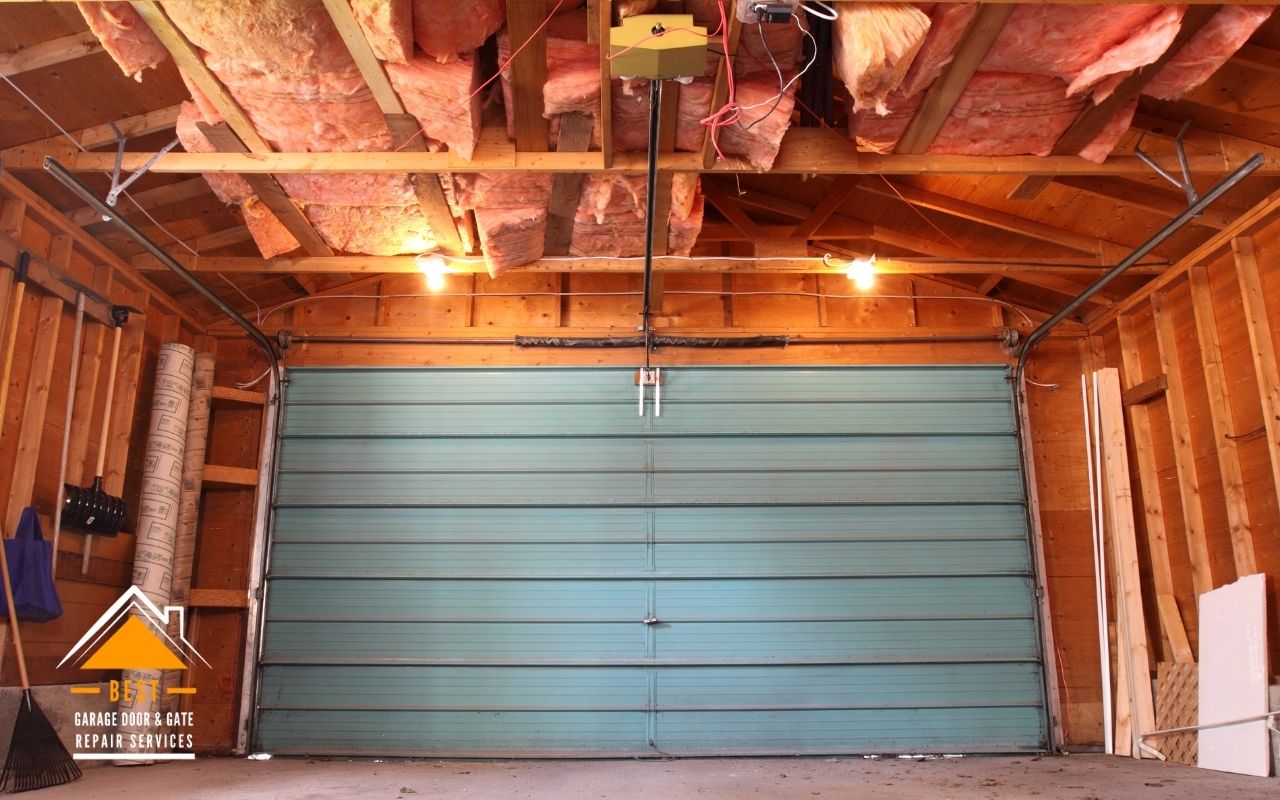Everyone prefers being in a warm and cozy place during winter’s harsh weather. Chilly breezes and lack of heating not only make us ill but damage property as well.
Typically, garages are not built with any form of insulation. The concrete floor tends to stay chilly, and a mere heater is not enough to make the temperature inside bearable.
You can take the following measures to keep your garage warm throughout this brutal season.
Table of Contents
WHAT CAN YOU DO TO MAKE YOUR GARAGE WARM IN WINTER?
1. Choose a heat source appropriate to the square footage of your garage
All you need to do is visit your nearest electronics store at the end of the autumn season. There, you will find aisles lined with electric heaters of all shapes and sizes. However, most of these heaters will not be powerful enough to heat your garage.
- Preferably, it would be best if you looked for a ceiling-mounted forced-air heating unit. An example of this is the hardwired Dr. Infrared 10,000-Watt Ceiling-Mounted Garage Heater. Make sure it is suitable for the size of your garage.
- Have this unit installed in any corner of the garage inclined at an angle of 45 degrees. This step maximizes the Insulation Of Your Garage. Usually, these units come with a remote and thermostat to allow you to control the temperature in the garage.
- However, one downside of having such a unit is that the lowest few inches of the garage remain unheated. Therefore, it is advised that you should buy a baseboard heater to keep your feet warm. Place the heater near the spot in the garage you work most frequently.
2. Using fiberglass batt insulation ad paneling as the finish of the walls
Even if you get a powerful heater, it will not be much effective if the insulation of the garage is insufficient. Most garage walls consist of studs covered with sheathing and siding on the outside.
- Without insulation, cold air will move into the garage quickly and waste the heating provided by the heater. To make an insulated barrier, line each stud space with fiberglass batt insulation. Follow this by using drywall panels and plywood sheets to finish the interior walls.
- Insulated walls will keep the garage warm and save tons of money on heating bills.
3. Garage Door Insulation
Garage doors are commonly produced from thin metal. Therefore, this thinness proves to be detrimental during winters. People living in cold climate areas often find frosting on the inside surface of garage doors.

Insulated Garage Doors – What to Look for?
- Insulating the garage door increases the room temperature on average by 10 to 12 degrees. Keep in mind that the heaters are not yet turned on in this case!
- Plus, the fact that DIY kits are available makes the entire process a lot simpler and easier to do. When opting for such kits, make sure to take your garage door measurements. Although each kit is Designed To Insulate One Goor, extra-large doors (or two or more doors) will require extra kits.
4. Root out sources of draft
Insulation and large heaters may be great aids in keeping your garage warm, but it can all go in vain if you do not eliminate sources of drafts in your garage.
To locate such areas, begin walking around your garage, focusing on the following main spots:

Root Out Sources Of Draft
- The door frame of the garage
Garage doors tend to not fit precisely around their frames, leaving tiny gaps from where air can enter.
Luckily, this problem can be easily solved by using integrated weather-strip seals like vinyl garage door top and sides seal. These strips can easily seal off any gaps present in the door frame.
- The garage door’s bottom
Given that your garage door is a year or two old, it is advisable to replace the seal along with the bottom of the door. These seals (or gaskets) are specifically made to stop drafts from entering below the door.
- Windows
Finally, another draft source, i.e., windows, needs to be sealed thoroughly. Install films such as the Duck 5-Window Shrink Film Insulator Kit by taping the shrink wrap to the window frame. Follow this by using a hairdryer to heat the film, completely fitting and seal drafts.
5. Others
Along with these, there are many more ways to keep your garage heated. You can fire up a wood-burning stove, use a kerosene space heater, install a floor covering, and so on.
Finally, we will end this article by linking to Best Garage Door and Repair Services. This company is your go-to, from fixing minor dents to replacing entire worn-out or damaged garage doors. Whenever you need help with your garage door, you can hit them up without hesitation. Their professionals will ensure that you are left satisfied with their work.


Leave A Comment